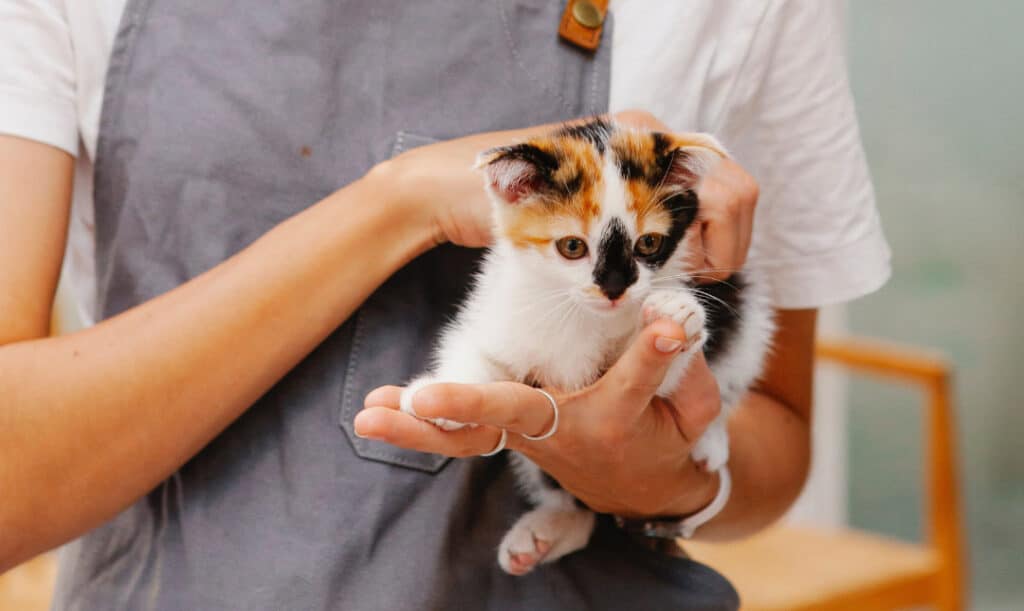Male Feline Desexing – What to Expect

Neutering a male cat is an excellent step to help your young man grow into a loving, well-adapted household citizen. However, at Vetmed we understand that deciding to desex or castrate your male kitten can be a scary one, so we have put together some information to help you understand both the procedure and the benefits of desexing your young man.
WHY DO VETS RECOMMEND DESEXING?
This is an easy one to answer – basically because there are so many health and behavioural benefits for your little kitten. These include:
- Less roaming – intact adult male cats tend to disappear for days at a time, searching for females and staking out their territory. (They really are tomcatting around!)
- Less aggressive behaviour – nearly all cats will fight, but most fights are between intact males. Conflicts lead to abscesses and the spread of disease.
- Less spraying – intact male (and female) cats mark their territory by spraying walls or any other vertical surface. Neutered males are less likely to spray, and their urine is not as strong smelling as intact males.
- Longer life and reduced injuries – because they get into fewer fights and do less roaming, neutered cats live longer than intact male cats do and have fewer injuries.
- Population control – many cats are euthanised because they are unwanted. Preventing unwanted litters of kittens is part of responsible pet ownership.
WHEN IS THE BEST TIME TO CASTRATE MY KITTEN?
The best time to neuter your kitten is around six months of age. The kitten has matured enough to make anaesthesia a low risk but is young enough not to have reached sexual maturity yet.
WHAT DOES CASTRATING A KITTEN INVOLVE?
In a male feline castration, both testicles are removed through small incisions made in the scrotum’s skin while the kitten is under a general anaesthetic. No sutures are required, and it is generally a quick and very painless procedure that only requires your kitten to be in hospital for the day.
WHAT DO I DO BEFORE THE PROCEDURE?
At Vetmed, kitten castrations are performed by appointment only Monday to Friday at all four of our vet hospitals. When you ring to book in your young man for castration, our lovely reception staff will answer any questions you may have and reinforce any important details you need to know.
Your kitten must have nothing to eat from approximately 8 pm the night before the surgery to ensure that there is nothing in his stomach that could lead to vomiting during the anaesthetic.
It is also vital that your little one is brought into the veterinary hospital between the hours of 7:30 and 9:00 am. This allows our dedicated vets and vet nurses to perform their pre-anaesthetic health checks and procedures in a way that promotes a painless, stress-free process and ensures the risks involved are mitigated as far as possible.
WHAT DOES THE DAY OF THE PROCEDURE INVOLVE?
After you have dropped off your young man with the vet nurses and you have signed the consent form, the sequence of procedure is a follows:
- Pre anaesthetic examination – your kitten must be checked over by a veterinarian before any sedation or pain relief to ensure that he is healthy and there are no physical signs of illness.
- Pre anaesthetic blood tests – blood tests are performed in-house and provide the veterinarian with vital information about your young man’s internal health prior to anaesthesia.
- Premedication with sedation and pain relief – once the veterinarian has established that your kitten is healthy using the physical exam and the blood tests, sedation and pain relief is given via injection. Your young man is then moved to a specialised area within the hospital for observation before anaesthesia.
- Induction of anaesthesia – once your kitten is sedated and has adequate pain relief, a catheter is inserted, and the anaesthetic is inducted using a fast-acting anaesthetic agent such as Alfaxan. A tube is then placed into their throat to ensure their airway is protected. He is then placed on a mixture of oxygen and inhalation anaesthetic whilst the procedure is conducted.
- Recovery – once his testicles have been removed, he will then be slowly woken up. This occurs in a recovery area of the hospital where specially designed cages provide plenty of warmth. Further pain relief is then provided to ensure your young man is relaxed and pain-free as he slowly recovers. We allow at least 2 hours from the time he is awake before he can go home to mitigate any complications which may occur during this period.
WHAT ABOUT AFTER THE PROCEDURE? WHAT SHOULD I EXPECT AT HOME?
The veterinarian or vet nurse will contact you as soon as your little one is in recovery, but you must allow at least 2 hours after this call before you can pick your young kitten up from the hospital. Your young male will go home with some pain relief medication, and you will be provided with a discharge statement that will guide you on how to use the medication, what to feed your little one and other important information. A vet nurse or veterinarian will go through this statement and explain how to administer the medication.
Expect your little kitten to be a bit quiet on the night of the procedure, but he should return to his usual self by the following day. He won’t have any sutures in the wound, but it is recommended that you do keep your little man inside for the first few days post-procedure to give him time to heal. If you have any questions, we are always here to help. Please contact us at one of our four locations, and one of our team members will be able to assist.
